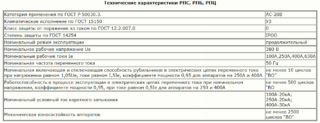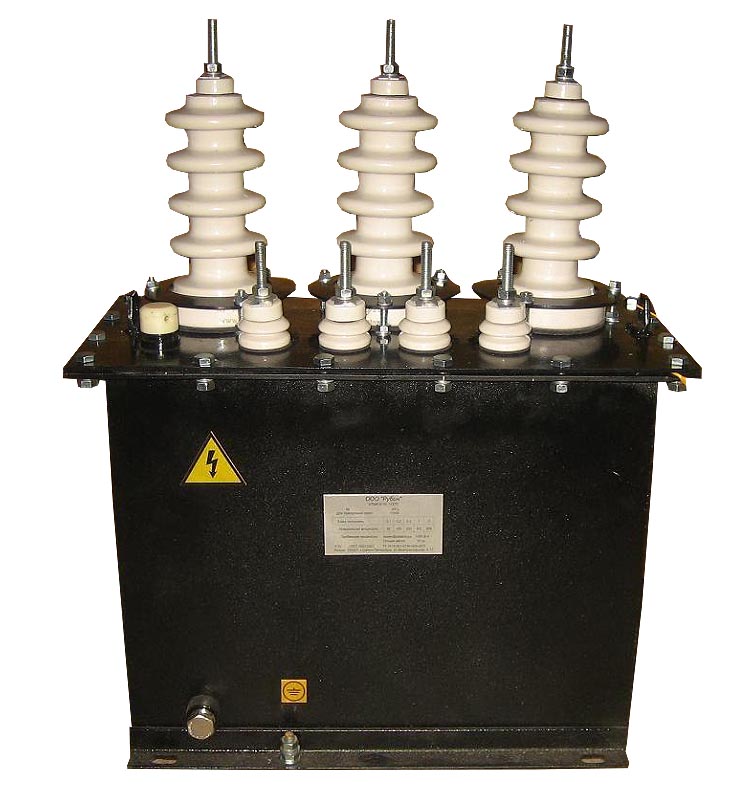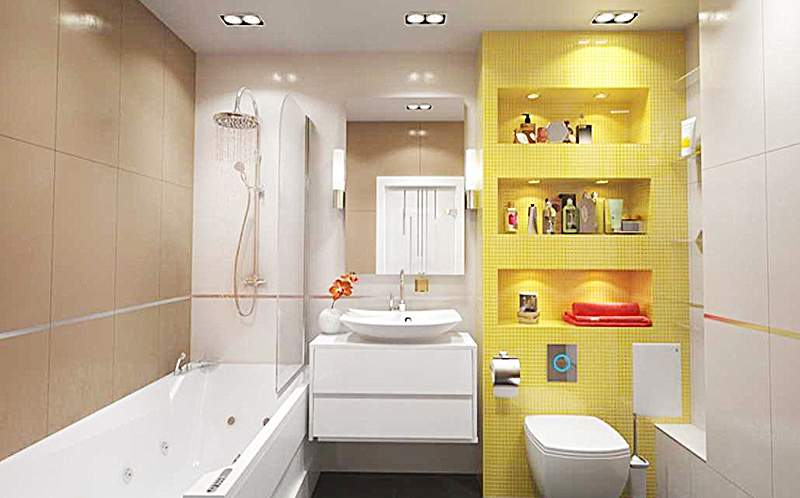In any electric line, even at the design stage, the possibility of a complete disconnection of the current is provided. This is necessary for conducting a survey of communications, performing repairs and routine maintenance, replacing or installing new equipment. The circuit breaker is the most reliable and effective device that breaks the circuit with guaranteed prevention of breakdown in the off state.
What is a switch
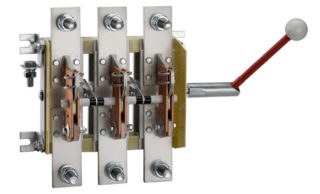
Products of various designs can be found in entrances and basements of houses, on the street and in public buildings. In most cases, all types of circuit breakers are located in distribution boards in whole or in part.
According to the classification, an electric switch is a part of the distribution mechanism and is designed to open the circuit in manual mode. The product is designed to operate in the range of 100-1000 amperes at a maximum voltage of 1000 volts. The current is interrupted by muscular effort by creating a break in the line.
The rocker switch-switch can be made in open and closed versions. The design depends on the amount of load applied to the contacts. This is justified by the fact that the rotary switch at the stage of activation and deactivation creates an arc and a sheaf of sparks, which can injure a person and cause a fire.
Products operate on direct and alternating voltage, can be used for switching single-phase and three-phase current.
380 V switches are used in production and in homes where consumers are installed operating from such a voltage. In private houses and dachas, the use of two-phase switching devices for 220 V is practiced.
Circuit breaker device
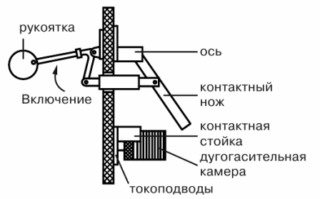
The switch is a simple but well thought-out device, thanks to which it has become widespread in electrical engineering.
Circuit breaker device:
- Base. Designed for reliable fastening of units and mechanisms of the device.
- Fixed contacts, rigidly fixed on the base and having terminals for connecting cable wires. They are double plates with elasticity.
- Fixed bracket for fixing a movable element. Made of durable abrasion resistant material.
- Moving contact made in the form of a knife or fork for a disposable insert.
- A handle equipped with an insulating pad at the gripping end.
Depending on the number of directions and poles, a three-phase electrical breaker has 3 output and 3/6 input contact terminals. The design of the device is designed to firmly hold the contacts regardless of their weight and vibration level. All parts through which current is passed are made of a special copper alloy M1. Corrosion protection is carried out by applying tin to them.
The difference between a circuit breaker and a disconnector
The difference between a circuit breaker and a disconnector lies in the mechanism for de-energizing the line, the distance between the separated ends and the presence of an electric arc.
The 380 V switch is used to disconnect devices under load - when switched on. The device makes it possible to carry out any manipulations with electrical equipment without de-energizing the entire residential facility. In this case, the distance between the contacts is sufficient so that no breakdown occurs.The body of the device covers the contacts, which prevents the ion arc from hitting adjacent parts or the ground line.
The purpose of the switch is to de-energize the entire facility. The load is pre-disconnected to prevent melting of the contacts. An emergency disconnection of the line is allowed in the event of emergency situations - fire, breakthrough of a water supply system or a heating system.
Advantages and disadvantages
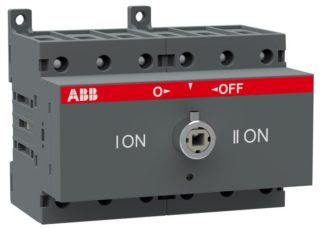
Reversing switch-disconnectors are in demand in all branches of economic activity.
The popularity of the products is based on the following advantages:
- Durability and reliability. The devices are resistant to mechanical stress and vibration.
- Long service life. The high wear resistance of the contacts and pivot joints ensures the durability of the devices, even with frequent use. The resource of the device is 3000-5000 shutdowns.
- Safety. There is no risk of electric shock, explosion or fire.
- Minimum maintenance costs. Periodic lubrication of the joint is sufficient.
- Wide operating temperature range.
- Ecological cleanliness. The devices do not emit harmful substances into the environment.
- Compactness. Small dimensions make it possible to install several products in one panel.
- Affordable cost.
- Simplicity and speed of installation.
The disadvantages of circuit breakers include a high level of switching overvoltage arising between the contacts at the moment of the minimum distance between them. This requires the use of effective measures to protect the switching points.
Circuit breaker application
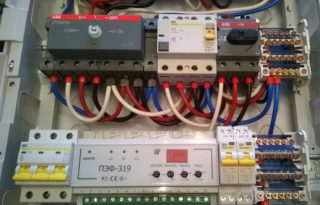
Scope of products:
- transformer boxes;
- local step-down substations;
- introductory panels at the entrances of houses;
- industrial equipment in workshops;
- warehouses;
- public places;
- offices, offices and other institutions;
- catering establishments;
- private houses, summer cottages, cottages.
Before installation, a schematic drawing is made, which indicates the line, consumers and switches. You can use a computer program to make a drawing. A single-phase or three-phase switch is located in a panel, which excludes access to it by unauthorized persons.
Main types
By marking the switch in the dashboard, you can find out its type, device and potential.
The following decryption is installed:
- Р - switch;
- P - switch;
- P - front connection of wires;
- B - side handle;
- Ц - central lever;
- digits - the first (1-3) number of poles, (4-6) current strength (1 - 100 A, 2 - 250 A, 4 - 400 A and 6 - 600 A).
- Current strength (100-1000 A).
- Number of poles (1-3).
- Type of current (direct, alternating).
- Control method (side, center).
- Method of connecting wires (front, rear).
- Directions of current (1-3).
- The presence of a fuse in the knife.
- The presence of an arc extinguishing system.
- Installation of auxiliary contacts.
- Protection degree (open and closed design).
- Operating temperature (hot, cold, moderate).
When choosing a product, it should be borne in mind that devices with a front handle can only disconnect de-energized circuits. For lines under load, devices with a side handle are used.
How to do it yourself
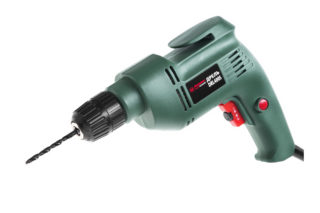
A cross-over product is often installed in buildings that are often disconnected from electricity. In such cases, a gasoline generator is used, which provides the object with energy. For fast and safe switching of current from the mains to the generator and vice versa, a circuit breaker is installed, which has 3 positions (0 and 2 lines).
To collect it yourself, you will need:
- drill;
- hacksaw;
- pliers;
- spanners;
- roulette;
- plastic pipe.
- copper tube;
- bolts and nuts.
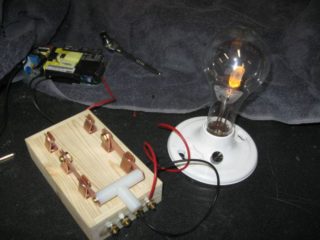
Description of the manufacturing sequence of the lever switch:
- Gluing the body made of boards.
- Copper tube contacts that are cut into pieces, flattened and bent.
- Drilling holes in contacts, making rivets.
- Drilling holes in the housing.
- Making a knife.
- Screwing the bracket and contacts to the base, attaching the knife.
- Fitting a plastic tube onto the crossover element.
- Connecting threads, screwing in clamping bolts.
It remains to bring and secure the wires.

